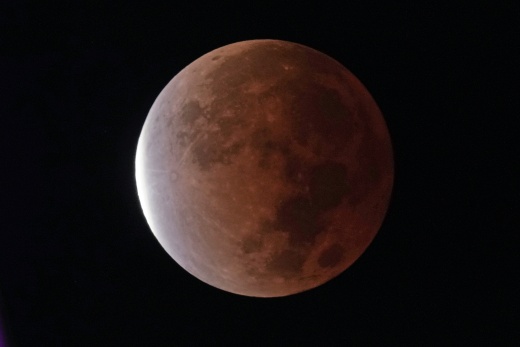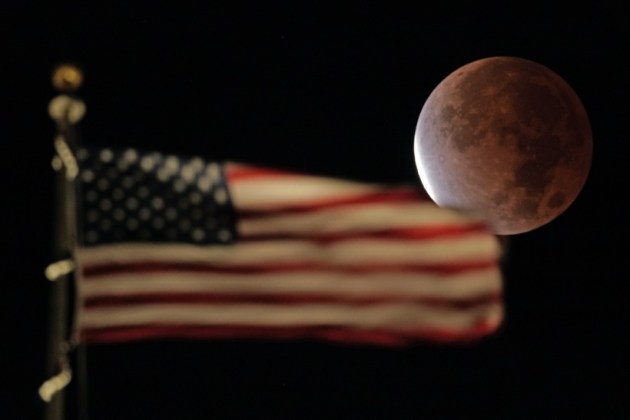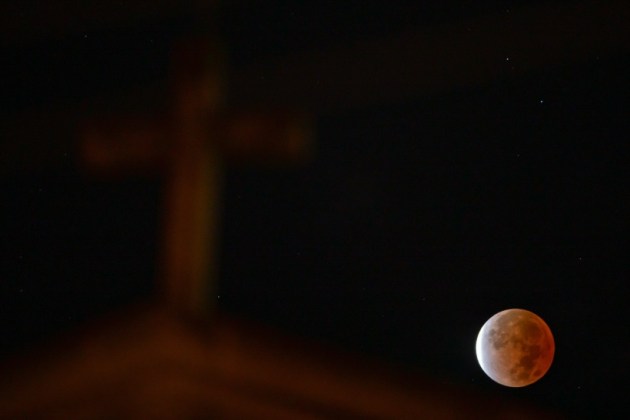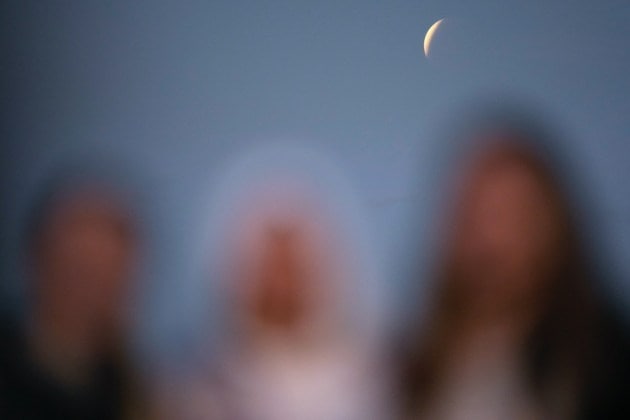Lunar Eclipse 2021: Glimpses of the astronomical event from around the world
The lunar eclipse was the longest of this century and longer than any other eclipse dating back 580 years.
November 20, 2021 10:22 IST 1 / 8
1 / 8The Earth's shadow covered the full moon during a partial lunar eclipse on Friday. Here is a glimpse of the astronomical event, captured in Kansas City, Mo. (AP Photo/Charlie Riedel)
 2 / 8
2 / 8A blood moon occurs during a total lunar eclipse. It gets that name as the Moon gets a reddish colour. This change in colour happens as a result that sunlight passes through Earth’s atmosphere before reaching the Moon. In this image from Kansas, the blood moon is seen behind a fluttering American flag. (AP Photo/Charlie Riedel)
 3 / 8
3 / 8When sunlight passes through the Earth’s atmosphere, the different colours (VIBGYOR) get scattered and the higher wavelength red light is transmitted and it hits the moon giving it a reddish-orange glow. Here, the partial lunar eclipse is seen beside a crane in Manila, Philippines on Friday.(AP Photo/Aaron Favila)
 4 / 8
4 / 8A view of the Lunar Eclipse behind St. Williams Church in Cincinnati. The eclipse was the longest of this century and longer than any other eclipse dating back 580 years. (Albert Cesare/The Cincinnati Enquirer via AP)
 5 / 8
5 / 8Three woman pose for a picture with the moon in partial eclipse on background in Asuncion’s Bay, Paraguay, early Friday. The partial lunar eclipse was visible from North America, South America, Eastern Asia, Australia, and the Pacific Region. (AP Photo/Jorge Saenz)
 6 / 8
6 / 8In this image, people are seen gathering to watch the partially eclipsed moon settling over the Paraguay River in Asuncion, Paraguay, early Friday. (AP Photo/Jorge Saenz)
 7 / 8
7 / 8The Earth's shadow covers the full moon during a partial lunar eclipse as it sets beyond an apartment building, Friday, Nov. 19, 2021, in downtown Kansas City, Mo. (AP Photo/Charlie Riedel)
 8 / 8
8 / 8The Earth's shadow covers the full moon during a partial lunar eclipse visible near a statue of George Washington atop Baltimore's Washington Monument in Baltimore. (AP Photo/Julio Cortez)











